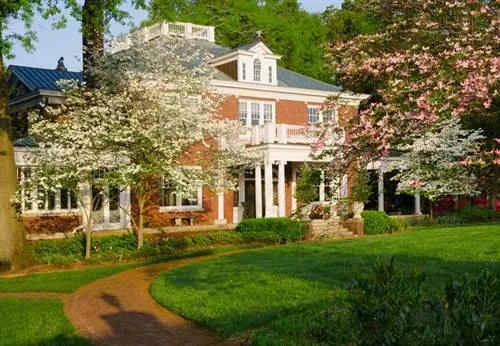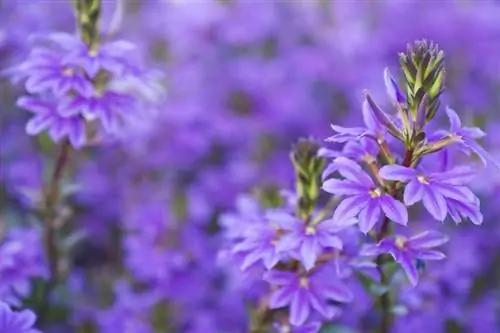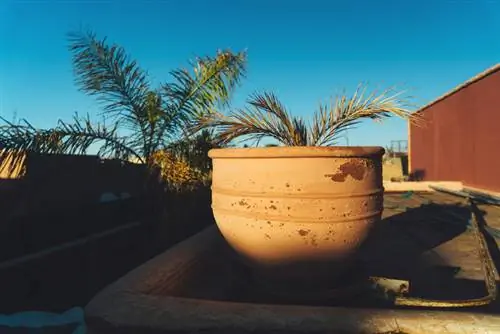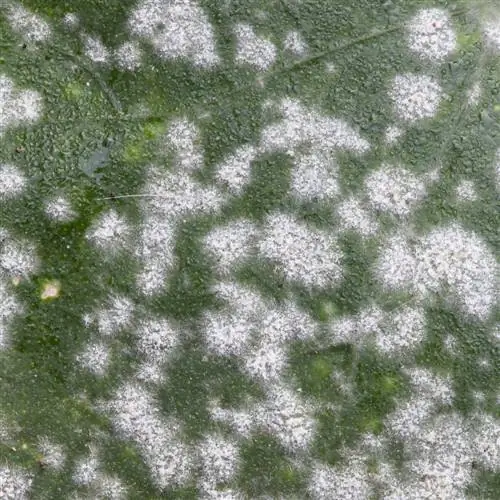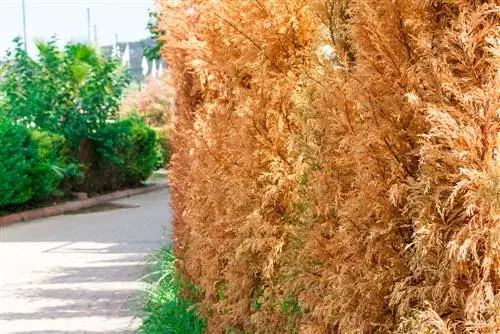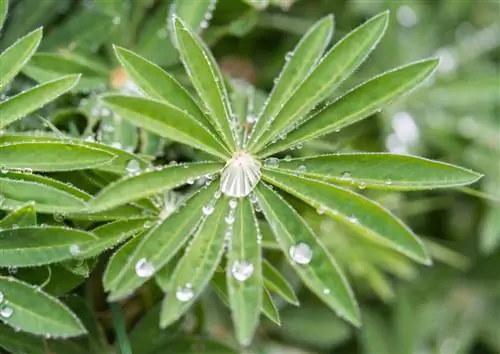- Author admin [email protected].
- Public 2023-12-16 16:46.
- Last modified 2025-01-23 11:20.
Like many other garden plants, the flower dogwood occasionally suffers from powdery mildew. Although it doesn't look nice, it can be controlled quite easily and the plant doesn't die as a result. The situation is different if your dogwood is attacked by anthracnose. The American dogwood is particularly susceptible to this.

What diseases and pests affect dogwood flowers?
The most common diseases of flower dogwood are powdery mildew and anthracnose. Prevention includes choosing a location, optimal care, beneficial insects and planting resistant varieties. Vegetable oil, alcohol or soap solution help with pest infestations such as mealybugs or mealybugs.
This fungal disease, also known as leaf brown, is practically incurable. If the infestation is minor, the diseased shoots are cut off close to the trunk or close to the ground. But if the characteristic brown leaf spots appear again, then you have no choice but to completely remove the plant before it dies and perhaps infects other plants.
Does the flower dogwood often suffer from pests?
In principle, there is only one pest that causes problems for flower dogwood, that is the mealybug or mealybug. However, you can easily combat this with vegetable oil or alcohol. If the infestation is very small and/or there is a small flowering dogwood, simply collect the small animals.
Large plants are more difficult to treat. Spray them with vodka or other high-proof alcohol, vegetable oil or a soap solution. Do the same thing if the infestation is a little more severe. You should only resort to chemical agents if other means do not help.
How can I prevent diseases and pests?
The best disease prevention measures include carefully chosen location and good care. If your dogwood gets enough light and water, it will be resilient. So-called beneficial insects help against all pests. Make your garden attractive for lacewings, ladybirds and parasitic wasps. They eat a lot of the little annoying animals.
The best preventative measures for dogwood:
- careful choice of location: sunny to partially shaded
- good care: water enough, good nutrient supply
- Use of beneficial insects: lacewings, ladybirds, parasitic wasps
- plant robust, resistant varieties
Tip
React immediately if you discover a disease or pest infestation on your flowering dogwoods. Then the damage remains small and you don't have to use any harsh measures.

